OVERVIEW OF QUESTIONS AND ANSWERS SERIES
January to June 2003
| January | February | March | April | May | June |
January
January 2003 (Part 1)
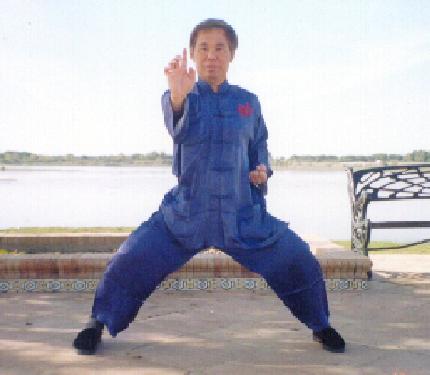
Anyone, master or novice, who has never learnt to spar, will be unable to spar or fight effectively. This is only logical. This is as logical as anyone who has never learnt how to speak Spanish (although he may know the meanings of written Spanish words) will be unable to speak Spanish, or anyone who has never learnt how to drive a car (although he may have read many driving manuals) will be unable to drive a car.
Click here to enter.
January 2003 (Part 2)
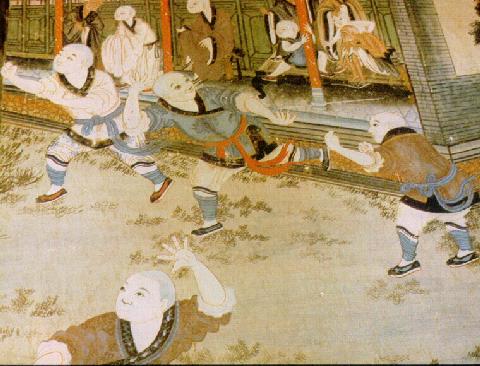
Very fortunately, the gigantic murals in the White Robe Hall of the Shaolin Temple in China still stand. The gigantic murals are testimony to the kind of Shaolin Kungfu practiced during the Ming Dynasty, which was between four to seven hundred years ago. They show Shaolin monks sparring, and they used Shaolin patterns, like the ones kungfu and wushu exponents practice today.
Click here to enter.
January 2003 (Part 3)
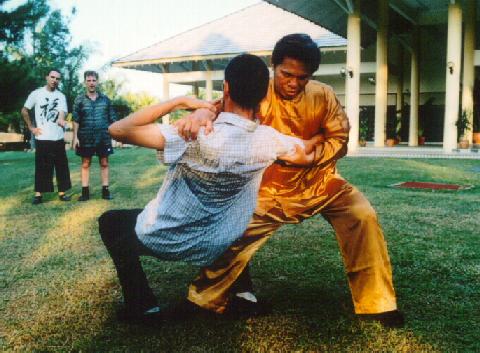
When I said that I was nowhere compared to the Shaolin monks of yore, I was not being modest, I was being honest. My sifu, Sifu Ho Fatt Nam, said the same thing, and I am really nowhere near my sifu. I am, at best, a master of energy; my sifu was a master of mind. You thought my claims impossible, and slandered me behind my back, but you would be shocked if you heard what my master had actually done.
Click here to enter.
February
February 2003(Part 1)
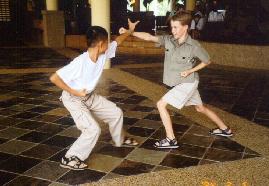
As a Zen cultivator, one should not concertedly ridicule beliefs that are traditionally accepted in Zen or other spiritual cultivations, even he may not personally believe in them, such as distant healing, multi-dimensional universe, power of mind over matter — beliefs which mediocre scientists sneer at but far-sighted scientists are beginning to appreciate.
Click here to enter.
February 2003 (Part 2)
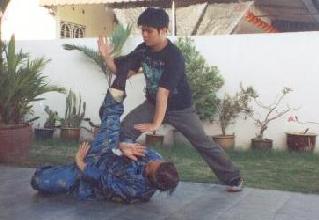
In kungfu combat training, we do not just practice or apply techniques in isolation. In other words, when we use kungfu techniques in sparring practice, we also enhance our presence of mind, apply force, improve fighting experience as well as other factors all at the same time.
Click here to enter.
February 2003 (Part 3)
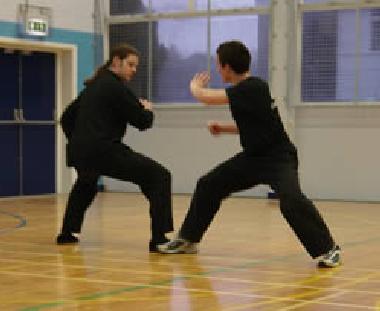
Because of our conviction, derived from direct personal experience, to us (in Shaolin Wahnam) comparing Western Boxing or any other martial art with Shaolin Kungfu is not even like comparing a grain of sand with the most precious diamond! Of course we have no problem with others practicing and enjoying Western Boxing and other martial arts, but we choose Shaolin Kungfu as taught by traditional masters.
Click here to enter.
March
March 2003 (Part 1)

Cantonese sounds closer to Chinese spoken in classical and ancient times. Chinese poetry sounds beautifully when read in Cantonese, but out of rhyme when read in Mandarin. Cantonese is spoken in south China, Hong Kong and most overseas Chinese communities, like in the United States, Canada, Britain and Australia. Most Shaolin terms today are translated into English following the Cantonese pronunciation.
Click here to enter.
March 2003 (Part 2)
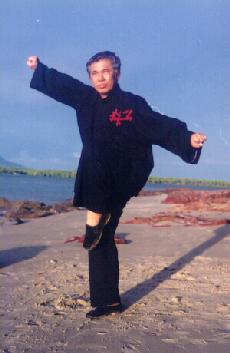
Many people may not understand that breathing in chi kung is quite different from breathing in conventional Western exercise. In conventional Western exercise, diaphragmatic breathing may be used to increase the volume of air taken in. But this is incorrect in chi kung. In chi kung, breathing is not just taking in and giving out air, it is taking in good energy and giving our bad energy.
Click here to enter.
March 2003 (Part 3)
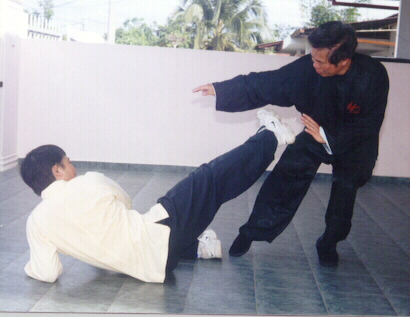
Just some common sense will make one realize that if traditional kungfu forms with appropriate stances were not effective for fighting, kungfu exponents in the past would not have spent so much time and effort training them. If bouncing about and throwing punches and high kicks as in Western Boxing and Kickboxing were most effective for real life combat, the kungfu exponents would have diligently practiced and religiously used bouncing about, throwing punches and high kicks instead.
Click here to enter.
April
April 2003 (Part 1)
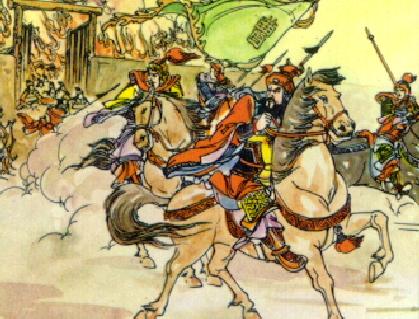
There was no doubt that the warriors of the Three Kingdom period were very skilful fighters. To be combat efficient was not only their professional requirement, it was also essential if they wanted to return home alive.
Click here to enter.
April 2003 (Part 2)
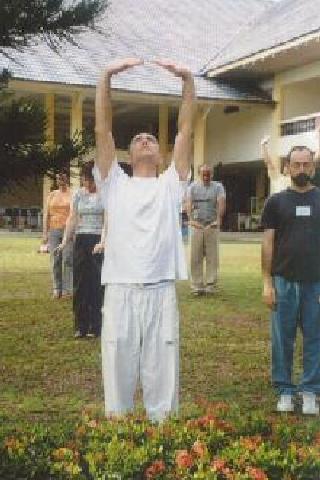
A useful technique for clear thinking is as follows. First, clear your mind of all thoughts. Then think of the topic in question, not allowing any other topics to come into your mind.
Click here to enter.
April 2003(Part 3)

Hence, in traditional Chinese medicine, there are no diseases called depression or high blood pressure, two very common diseases in the West. This does not mean there were no people in ancient China who suffered from what modern Western doctors would call depression and high blood pressure. The ancient Chinese physicians would call these diseases differently, such as “jian wang” (literally “health loss”) and “gan hua shang yan” (liver fire rising up).
Click here to enter.
May
May 2003 (Part 1)

In traditional Chinese medicine, a high blood pressure patient will not be described as suffering from high blood pressure! The description depends on his reaction against known or unknown disease causing agents, and in this case it is usually “rising yang energy from the liver”. In other words, a patient described by Western doctors as suffering from high blood pressure, is likely to be described by traditional Chinese physicians as suffering from “rising yang energy from the liver”. The crucial difference is that “high blood pressure” is a symptom, whereas “rising yang energy from the liver” is the cause of the illness.
Click here to enter.
May 2003 (Part 2)
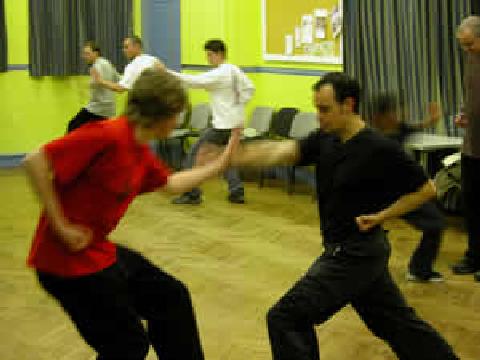
But when you need chi for combat, it can be generated from your dan tian (energy field). Hence, when you performed palm strikes in your Tan Tui, chi shot out from your palms. Many people, including those who teach wushu or kungfu today, may not believe in what you said. Some may accuse you of lying! They think your achievement is too good to be true. They could not bring themselves to accept the fact that somebody like you, whom they regard as their equal, could achieve what they thought only masters in the past could do.
Click here to enter.
May 2003 (Part 3)
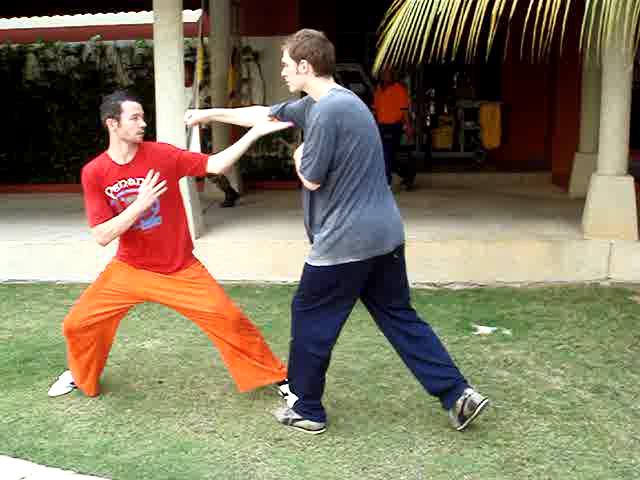
To us in Shaolkin Wahnam, and we believe to many other kungfu exponents as well, to say that classical Shaolin forms cannot be used for fighting, or chi is non-existent in Taijiquan, is as ridiculous as saying that Albert Einstein did not know physics or a fish cannot swim in water. Yet, in some discussion forums where our Shaolin Wahnam members stated our conviction that Shaolin forms are effective for combat and that chi is an essential aspect of Taijiquan, opposition to these statements was so severe and sometimes bitter that one would think our statements were minority views rather than established facts.
Click here to enter.
June
June 2003 (Part 1)
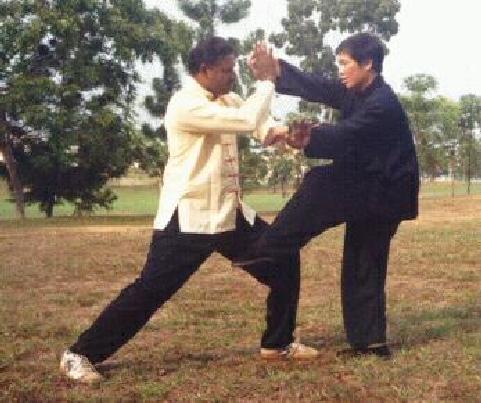
The most obvious sign of misguided practice is not obtaining results that the practice is purported to give. This is so obvious and so logical, yet an overwhelming majority of those who practice qigong, as well as kungfu or wushu today, especially in China, are guilty of this mistake. The majority of these qigong and wushu practitioners, including their masters, have no experience of qi and no ability of using their wushu to defend themselves at all, though some of them may be formidable fighters using techniques of other martial systems.
Click here to enter.
June 2003 (Part 2)
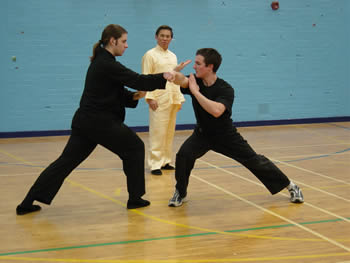
If you are unprepared but fight someone stronger than you, then you are a lousy warrior. A good warrior fights only when he knows he will win. If the odds are even, he will use tactics or strategies so that he can turn the odds and have at least some advantages. If the odds are overwhelmingly against him, he retreats and saves himself to fight another day. A scholar-warrior is even better. He wins without actual fighting. He does not want to fight if he can, but if he has no choice and has to fight, he will fight well and win elegantly, causing as little harm to his opponent as necessary. If possible, he wants to win a friend, not just defeat an enemy.
Click here to enter.
June 2003 (Part 3)
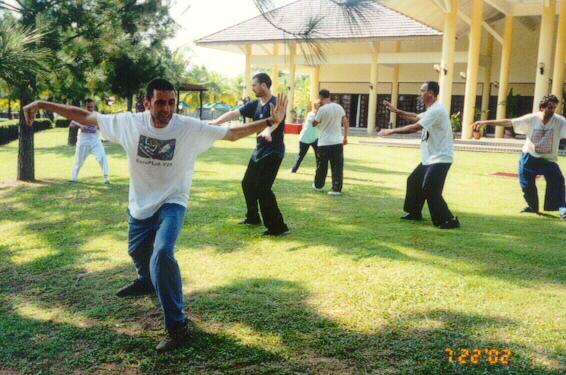
Why is there a difference between learning from a master personally and learning from his instructions in his books? Great masters have answered this question many times, though many uninitiated people ignore it or do not believe in it. Great teachings — like feeling of internal force, joy and inner peace — have to be transmitted from heart to heart.
Click here to enter.
